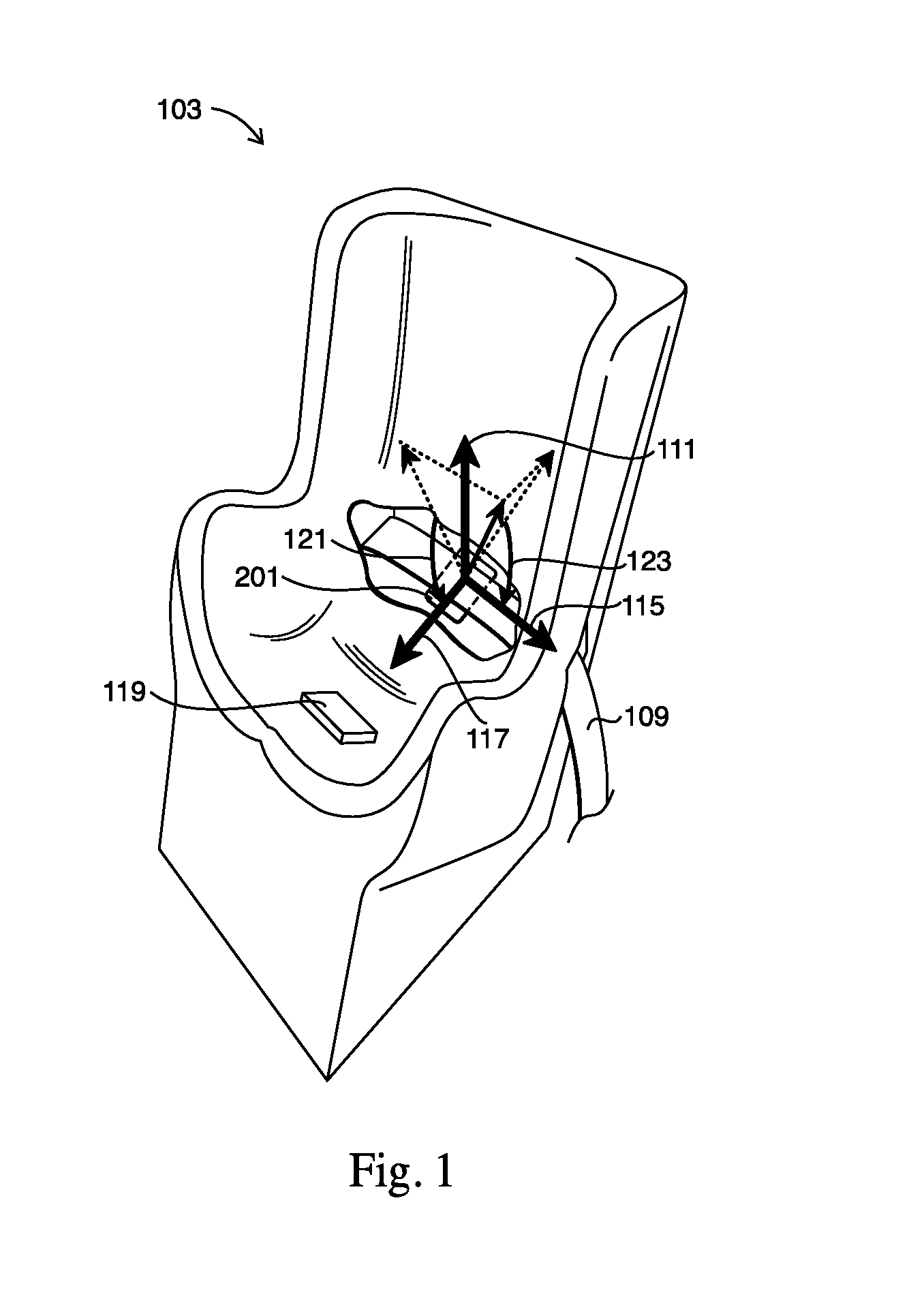Systems and Methods for Notifying a Caregiver of the Condition of a Child in a Vehicular Child Safety Restraint
a child safety and child technology, applied in the field of child safety restraints, can solve the problems of unsafe use of child seat, increased risk of injury, improper installation of child seat, etc., and achieve the effect of improving the chances of a timely respons
- Summary
- Abstract
- Description
- Claims
- Application Information
AI Technical Summary
Benefits of technology
Problems solved by technology
Method used
Image
Examples
Embodiment Construction
[0040]Although the present invention is described with particular reference to the accompanying drawings, it is to be understood at the outset that it is contemplated that the present invention may vary in specific detail from that illustrated and described herein while still achieving the desirable characteristics and features of the present invention. Accordingly, the description that follows is intended to be understood as a broad enabling disclosure directed to persons skilled in the applicable arts, and is not to be understood as being restrictive.
[0041]Generally, the systems and methods described herein include four primary component systems, and may also comprise further systems. The four primary component systems are: a monitoring system comprising one or more sensors; a transmitting system; a receiving system; and a notification system. Generally, the systems and methods detect a condition relating to the health or safety of a child in a vehicular child seat, transmit infor...
PUM
 Login to View More
Login to View More Abstract
Description
Claims
Application Information
 Login to View More
Login to View More - R&D
- Intellectual Property
- Life Sciences
- Materials
- Tech Scout
- Unparalleled Data Quality
- Higher Quality Content
- 60% Fewer Hallucinations
Browse by: Latest US Patents, China's latest patents, Technical Efficacy Thesaurus, Application Domain, Technology Topic, Popular Technical Reports.
© 2025 PatSnap. All rights reserved.Legal|Privacy policy|Modern Slavery Act Transparency Statement|Sitemap|About US| Contact US: help@patsnap.com



